基于可逆共价键制备多相结构自修复聚合物材料毕业论文
2020-04-20 13:51:53
摘 要
在自然界之中,多种生物它的局部遭到损伤后可以自己进行修复而且会逐渐愈合,可是我们人工合成的高分子材料常常却没有像自然界生物体的“自修复”的机能。受此启发,人们就想制备出一种能够在受到损伤后自我修复的材料从而提高这类材料的使用寿命。高分子材料的修复需要分子链具有一定的扩散运动能力,当材料受到损伤产生裂痕后可以通过界面处的闭合及分子链的扩散实现材料的自修复。
线性聚氨酯有良好的韧性和再次加工能力,但它的强度和耐溶剂机能差。环氧树脂具备很高的交联密度,因此在赋予质料较高强度和很好硬度的同时,也会使的材料的韧性变的差,所以,材料损坏后就难以再次加以回收和利用。这两种材料的机能特色,就限定了它们的使用范围。因此,本次实验尝试将两者相结合,在聚氨酯主链上引入可逆双硫键,增加分子链的运动能力;通过Diels-Alder反应可逆键交联引发相分离,使得环氧树脂交联,交联后的环氧树脂作为微球分散在线性聚氨酯体系中作为可逆交联点。线性聚氨酯在可逆双硫键的作用下具有很好的扩散运动能力,而环氧树脂在DA反应可逆键的帮助下实现了环氧网络的交联-解交联,将两者结合起来以确保材料的自愈性能使材料具有优异的机械性能和可回收性。
关键词: 环氧树脂 聚氨酯 可逆键 自修复 热可逆
Preparation of self-repairing polymer materials with multiphase structures based on reversible covalent bonds
Abstract
Many organisms in nature can be repaired on their own after local damage and will gradually heal, but synthetic polymer materials often do not have such "self-healing" function. Inspired by this, it is wanted to produce a material that can repair itself after injury, The duration of use of the material has been extended. The repair of polymer material requires the molecular chain to have certain diffusion motion ability, and the self-repair of the material can be realized by the closure at the interface and the diffusion of the molecular chain when the material is damaged by the fracture.
Linear polyurethane has good toughness and reprocessing ability, However, solvent resistance and strength are relatively poor. Epoxy resin has a high cross-linked density, in the material to give high strength and hardness at the same time, but also make the material toughness worse, once the material damage, will be difficult to recycle and utilize again. The functional characteristics of these two materials limit their range of use. Therefore, this experiment attempts to combine the two, introduce reversible double sulfur bond on the polyurethane main chain, increasing the motor capacity of the molecular chain; The cross-linked epoxy resin is dispersed in the linear polyurethane system as a reversible crosslinking point in the form of microspheres by the Diels-Alder reaction reversible bond crosslinking initiation phase separation. Linear polyurethane has good diffusion motion ability under the action of reversible double sulfur bond, while epoxy resin realizes the cross-linking-decoupling of epoxy network with the help of DA reaction reversible key. After introducing the DA reaction reversible key, epoxy resin realizes the crosslinking-crosslinking of epoxy network, combining the two to ensure the self-healing properties of the material gives the material excellent mechanical properties and recyclability.
Key Words:Epoxy resin;polyurethane; reversible bond; self-repair;thermal reversible
目录
摘 要 I
ABSTRACT II
第一章 前言 1
1.1 课题背景 1
1.3 本课题工作 2
第二章 文献综述 3
2.1 自修复材料 3
2.1.1 自修复聚合物材料的定义 3
2.1.2 自修复聚合物材料的分类 3
2.2 聚氨酯材料 4
2.2.1 聚氨酯材料的结构与性能 4
2.2.2 基于双硫键的自修复聚氨酯 4
2.3 环氧树脂 5
2.3.1 环氧树脂结构与性能 5
2.3.2 基于DA反应的自修复环氧树脂 5
2.4 聚氨酯-环氧树脂多相自修复聚合物材料 6
第三章 实验部分 8
3.1 实验原料 8
3.2 实验仪器与设备 8
3.3 实验配方 9
3.3.1 自修复聚氨酯的制备 9
3.3.2 自修复环氧树脂的制备 9
3.3.3 自修复两相共混物的制备 9
第四章 结果与讨论 11
4.1 共混物GPC分子量的测定 11
4.2 共混物的红外测试 11
4.3 扫描电镜测试(SEM) 13
4.4 力学性能及自修复性能测试 15
第五章 结论 18
参考文献 19
致谢 21
第一章 前言
1.1 课题背景
通常,在生物体局部遭到毁伤后,都可以完成自我诊断和自修复这两个阶段,并且可以实现完全愈合。在日常生活中,我们的皮肤遭受到毁伤之后可以自身进行愈合的进程便是典型的自我修复的例子。1980年,美国军队根据生物体自愈合,提出了自修复高分子材料这一观点,这类材料像生物体一样,自己就可以对自身诊断,并且在某些部位遭到毁伤后可以直接进行自我修复。通过仿照生物体的自我修复机制,聚合物复合材料可以自我诊断其自身的毁伤并实现自主修复。因此,有效地改善了这类材料的力学性能,这样的话就消除材料的安全隐患并延长材料的使用寿命。
聚合物材料在加工成型和使用过程中因为轻易就会遭到外力作用所以其在内部就会发生毁伤或者使其直接破坏,从而降低了材料的使用寿命,提高了生产成本。实现热塑性的聚合物的加工回收再次利用的方法有两种:熔融法和溶液法,可是加入溶剂后,这种热塑性材料的耐溶剂性非常差,机械强度较低;即使热固性聚合物材料机械强度较好,以及耐溶剂性也比较好,但热固性聚合物一旦加工成型就很难再进行修复,使此类聚合物材料无法再循环加工利用。将热固性聚合物实现自愈合且循环利用是比较具有挑战的。近年来,将可逆键引入高分子材料中是新兴起的一种技术,利用其可逆键的可逆反应实现材料的自愈。成为了制备可以二次加工热固性聚合物材料的一种有用方式,这类方式下制备的交联聚合物力学性能优良、结构布局均匀,理论上这类交联聚合物材料应该具备无数次可以反复循环修复加工再利用的能力,传统热固性树脂的材料将来会被这一类新型聚合物材料替换。当聚合物材料在外界某些条件下,存在一些键可能发生断裂现象,但同时这些可逆键又可以在外部条件消除之后再次重新结合成键,聚合物材料就拥有了修复其自身裂缝的能力。在此聚合物材料受损后裂纹附近重复上述的修复过程可以发生,断裂的高分子链因可逆键的再次生成而重新修复。
以上是毕业论文大纲或资料介绍,该课题完整毕业论文、开题报告、任务书、程序设计、图纸设计等资料请添加微信获取,微信号:bysjorg。
相关图片展示:
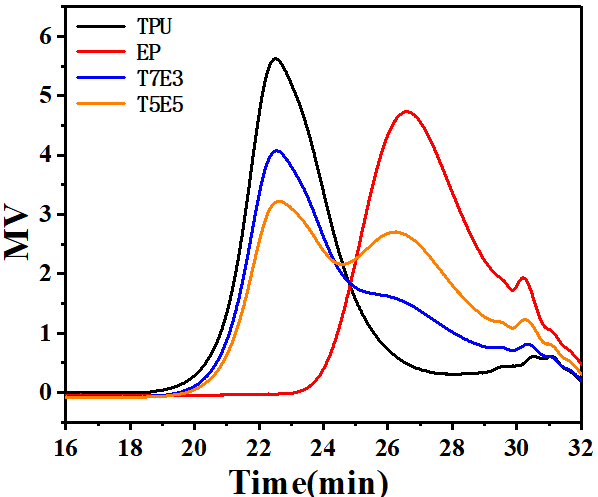
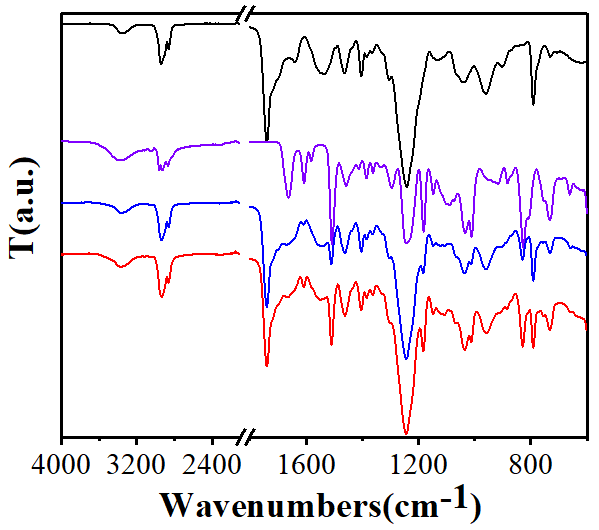
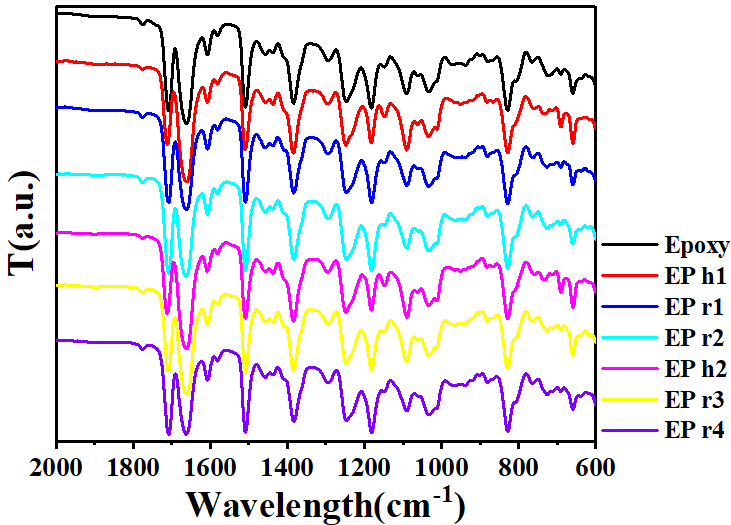
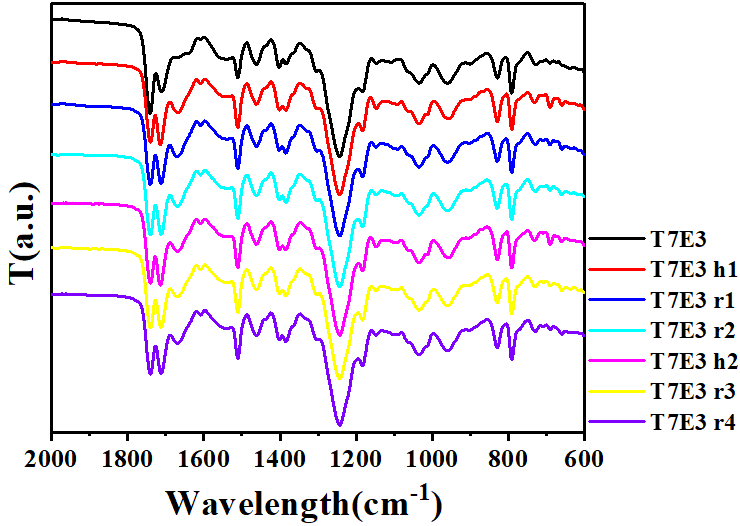
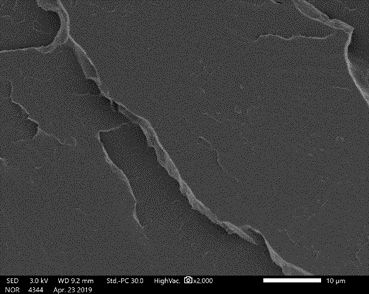
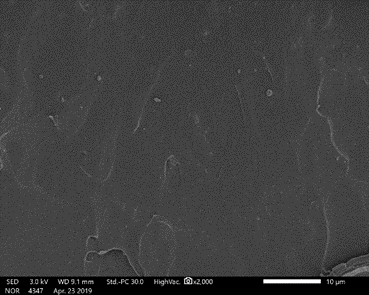
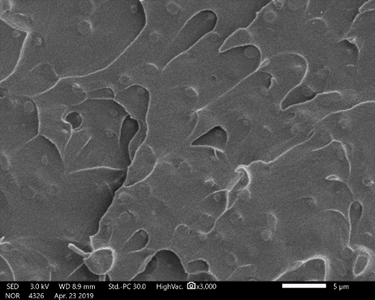
课题毕业论文、开题报告、任务书、外文翻译、程序设计、图纸设计等资料可联系客服协助查找。



